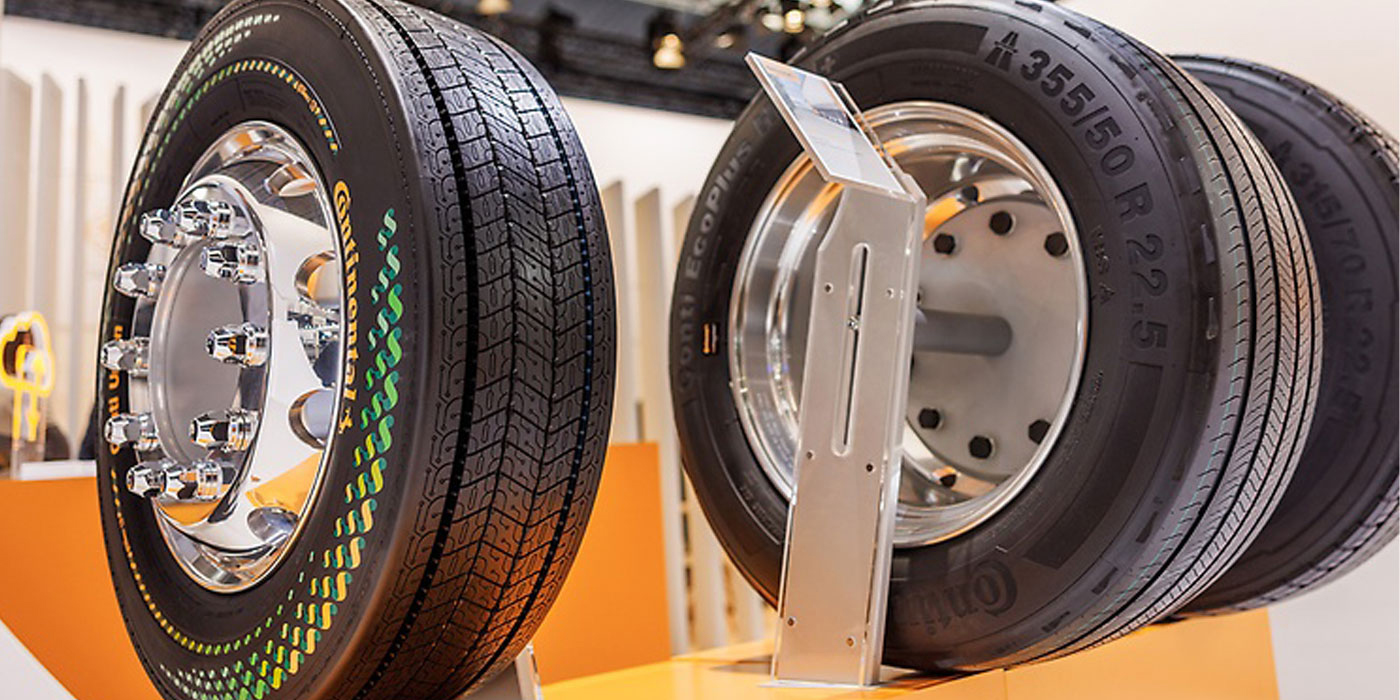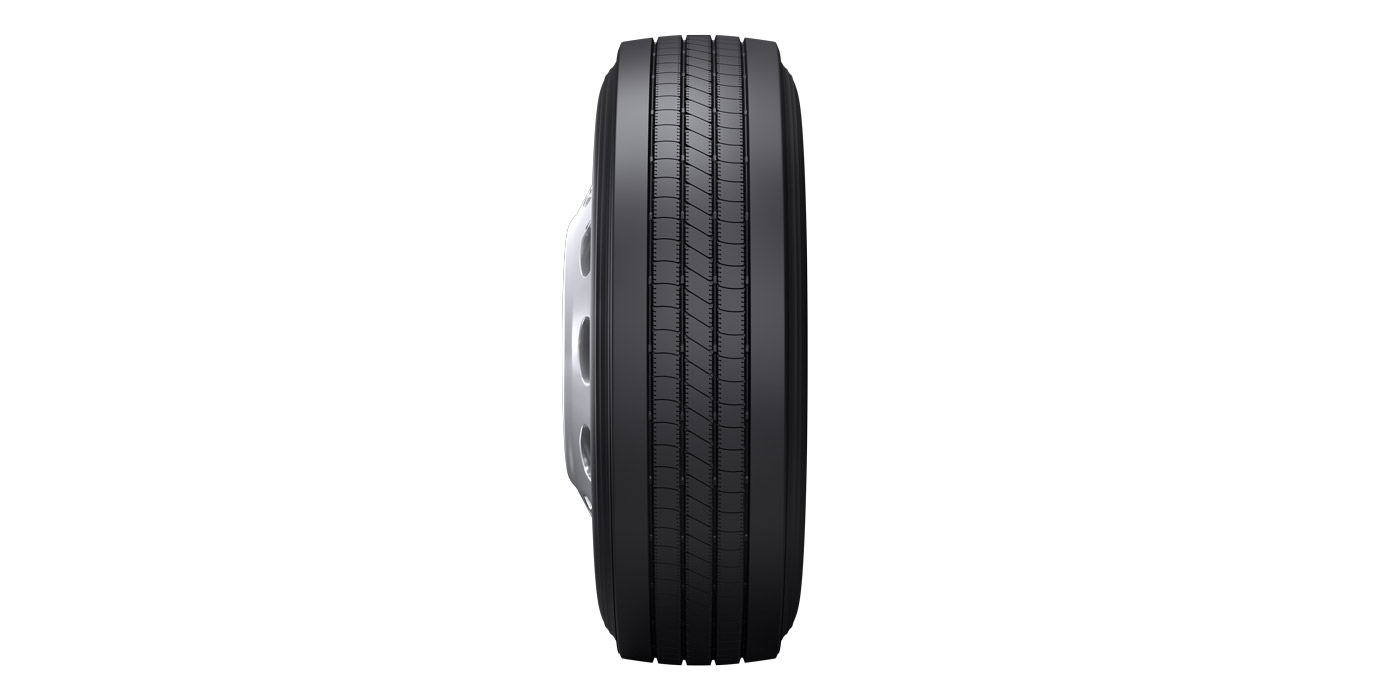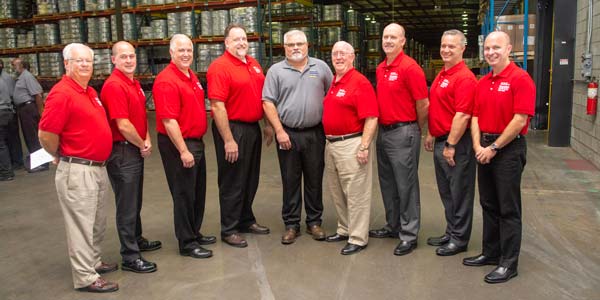Mostly Cloudy
Consolidations, NHTSA testing and Asian imports have made the retread market muddy
Inspect the casing. Remove old tread. Apply new tread rubber. Cure and trim the tire. Repeat as necessary.
The act of retreading a tire isn’t the most complex thing in the industry. However, getting a firm handle on the medium truck tire retread market can be a little tougher. The market has been cloudy for a long time now – and for various reasons. When new tire sales are down, retread sales trend down. Growth has been limited over the past couple of years, and the number of retreaders has decreased over that time.
Lower cost new radials from China and the Far East are pushing hard into the U.S. market. Profitability has always been tough for retreaders, who seem to be forced to get more automated every day.
Now throw in the federal government. For two years, the National Highway Traffic Safety Administration (NHTSA) has been snooping around the tire industry, looking for faults and defects. And it has turned its attention to the retread market, as well. Last month, NHTSA began testing retreads – with no end and little announced intent in sight.
So where does all this leave the retread market? Hopefully growing and able to stand up to the government while defending its home turf. But one thing is for sure, quality retreaders know they have a quality product, one that performs faithfully and can help fleets reduce costs.
Market Thoughts
It’s been well documented that tires are the second-highest operational cost for fleets, fuel being the first. Fleets can’t survive by mounting up new tires every time the old ones wear out. And for a long time, retreads have been a viable option in controlling tire costs.
There are millions of retreads in the market right now. Couple that with the millions of new tires hitting the market every year and there’s a lot of casings out there that are candidates for retreading. But how is the market shaping up?
We asked the folks at Cooper, Michelin and one well-known industry consultant for their views. Bandag Inc. declined comment for this story.
"Retread sales actually started increasing in the second half of 2002," says Randy Clark, vice president of marketing for Michelin Americas Truck Tires. "We see that trend continuing into 2003. Trucking is always experiencing financial challenges, but the runaway costs of insurance and diesel fuel are causing serious distress.
"For most operations, quality retreads offer a lower cost per mile than running all new tires and bring a real solution to a fleet seeking a reduction in operating expense."
Not only will the traditional commercial fleet market continue to help the retread market, but the current state of the economy might open more doors.
"The military and state agencies and the like are short on money. Their budgets are in the red," says Marvin Bozarth, president of Bozarth Tire Industry Consultants and a TIA consultant. "I think many of those organizations are looking to cut costs and retreads can help them.
"New tire prices will take a jump this year with oil and carbon black costs going up. That will help retreads somewhat, but I don’t think there’s going be a big boom in sales," Bozarth says. "Retreads will probably be up around 2% for this year. We started out strong in January, but in February we fell on our face. Plants were shutting and bad weather had something to do with it. I think the economy will pick up and help the market."
The retread market will continue to suffer from pricing pressure – like any other segment in this industry. As the market for new tires improves, it will strengthen the retread market.
"Retreaders continue to struggle for profitability," says Larry Enders, president of Cooper Tire’s commercial products division. "Casing prices are very low and new tire manufacturers have the opportunity and need to firm up their truck tire pricing. Growth in retreading will also be better than 2002 as the economy improves.
"The fact that retreads perform reliably and offer significant reductions in tire costs is well established," Enders says, "and the use of retreads will be demanded by government administrators because of the potential for cost savings."
The TREAD Act ®ƒ
In last month’s Tire Review, we examined the impact the TREAD Act, in its current form, could have on tire dealers. While that answer is murky, the effect of the TREAD Act on the retread industry is cloudier still.
One good thing for the tire industry is that NHTSA, automakers and consumers have been forced to recognize the importance of proper tire inflation and the impact of overloading. But while proper education and such things as tire pressure monitoring systems in fleets might improve the retread market, perhaps the toughest part of the TREAD Act will be its cost to retreaders.
No one, in any part of the industry, will be able to comply with the TREAD Act without spending money – and, sometimes, lots of it. Enders sees the legislation as having a negative effect on a market where it’s not needed. And the ramifications will be enormous.
"The financial impact of complying with additional government regulation on hundreds of small, independently owned businesses – especially in a segment of the industry that does not warrant such intrusion ®“ is the most serious potential impact," he says.
"U.S. retreaders produce in excess of 16 million retreads annually, and when viewed in conjunction with their supplier and distribution base, employs thousands upon thousands of people. The imposition of costly regulatory and compliance requirements, in the absence of any valid and compelling reason to do so, could result in the needless failure of many of these small, independently owned businesses.
"Such an occurrence would be tragic," he adds.
Enders is looking ahead, and hoping – like every retreader ®“ that the TREAD Act will leave this market relatively unscathed. If that happens (read: harsh new regulations aren’t imposed), the retread market will have escaped. If, however, new regs are levied ®“ "NHTSA’s charge is to update FMVSS 119, so we suspect that retreads will be added in some way," says Michelin’s Clark ®“ then who knows what will happen.
"The TREAD Act would have little impact without new regulations," says Bozarth. "If there were new regulations, we don’t know what they would require and would cost retreaders. It’s uncertain.
"But I do know one thing. If they do require the annual testing of all retread plants and tires, there’s not enough testing equipment to do that right now."
®ƒ And Testing
Despite there being no clear indication of how or whether the TREAD Act will apply to the retread market, NHTSA has begun tests on retreads – using new tire standards. While the industry is confident retreads can pass the test, more than a few have to be a little jittery.
"The TREAD Act mandates that ‘The Secretary … shall … revise and update the tire standards published at … 49CFR571.119,’ says Enders. "In response to this mandate, NHTSA is currently conducting a test program to assess the performance of both new medium truck tires and retreads under the conditions outlined in that standard.
"The industry is confident that these tests will prove in the laboratory what the trucking industry already knows: both new tires and retreads provide excellent performance and excellent value today," Enders says.
"To the best of anyone’s knowledge, there has never been a recall on retreads. Retreads have a proven track record, which is well-recognized by the trucking industry, as demonstrated by the fact that more retreads are sold each year than new tires."
When NHTSA’s testing was first announced, tiremakers, along with RMA, TIA, and the Tread Rubber Manufacturers Group, offered real-world information and suggestions on how to make testing effective. "NHTSA significantly adjusted their original test protocol based upon industry input," Clark notes. "This is a great example of how the input process used by the NHTSA works to achieve appropriate application of the intentions of Congress."
While Clark concedes that NHTSA is best positioned to discuss its testing protocol, some information has come out. "The testing started in February and was scheduled to end some time in March," he says. "The FMVSS 119 test protocol is the baseline test, but more severe conditions will also be evaluated. But FMVSS 119 in its current form does not address retreads."
According to Marvin Bozarth, this is NHTSA’s method of testing retreads in a nutshell:
"NHTSA’s contracted with Smithers Scientific Services (an Akron, Ohio-based company) to originally test 960 new and retreaded medium truck tires. Sixty percent of those (516) would be retreads." Then the test was augmented. "Now, they’ve cut the test back to only 450 tires, 60% of which would still be retreads (270). They’re going to use an 11R22.5 G-rated tire.
"First, they were going to test all drive axle lug designs with a second retread on them. Smithers was going to buy casings that had been retreaded once and retread them with the lug design. Now, they claim they are going to do all that and throw in some trailer tires, as well," Bozarth notes.
"NHTSA’s going to run the tire to destruction. It’s not a speed test, it’s a load test. They’re going to keep increasing the load until the tire fails. But we do have some concerns they might run the speed up. They imply the results of the first test might necessitate a second test. They haven’t made any decision on what to do."
Any way the government does the test, and no matter which baseline it uses, one of the main problems with testing retreads is that there doesn’t seem to be a need to do so. As both Enders and Bozarth have pointed out, there hasn’t been a recall of a retread.
"The primary problem in the medium truck tire arena is ‘rubber-on-the-road’ which is perceived by the public as a ‘retread’ problem," Enders says. "But it is, in fact, a tire maintenance issue. That is the issue that really needs to be addressed."
And, just as it has done on the consumer side of the TREAD Act, NHTSA is not testing tire maintenance.
A Smaller Universe
For the past several years, the number of retread plants across the country has been on the decline. Bozarth estimates that there are currently 1,080 plants in the U.S. Cooper estimates 1,085. Escalating raw material prices, increased operational costs, depressed new tire prices, increased competition, and greater demands from customers have all put increased pressure on remanufacturing operations.
And it’s easy to see who’s being phased out: the smaller ones.
"A lot of it is consolidation," Bozarth says. "Companies with multiple facilities are condensing, bigger companies are buying smaller ones. There’s a few little guys out there that are having difficulty competing because of national accounts and having lost niche markets. Sometimes, they’re too small to offer certain services or they aren’t affiliated with someone."
"The independent retreader struggles daily with longer payment terms from his customers, difficulties in recruiting and retaining reliable, well-trained employees, and the need for increased capital investment to maintain market position and profitability," Cooper’s Enders says. "This demand for increased financial and personnel resources is more than some smaller retreaders can handle, so a sale of the business to a larger competitor makes sense.
"We are seeing more consolidations, with some of those becoming company-owned outlets required to supply national central-billed account programs that appear to be marginally profitable for these smaller dealers."
Even with the decrease in the number of plants, production is still steady, if not on the rise. "Raben Tire, across the river from me in Indiana, was running 75 tires a day," Bozarth offers. "But they moved into a new plant and have almost doubled production."
But while the market contracts, one thing that hasn’t been sacrificed is quality. Quality has improved with better equipment and processes – things that are more easily purchased by larger or company-owned facilities.
"Quality has actually improved because larger shops can afford the latest equipment, such as sophisticated casing inspection techniques," Clark says. "For example, all Michelin Retread Technology shops have an electrostatic liner inspection, an X-ray inspection device, and a Casing Integrity Analyzer, which is based on laser shearography. Such equipment can dramatically improve the reliability of the finished product." But it’s technology that few smaller or non-affiliated dealers can afford.
The smaller retreaders had the experience; they were craftsmen at what they did, working for decades at their trade. All of that has "given way to larger retread shops with more expensive automated equipment," says Enders. "In the overall analysis, considering all the movement from smaller retread shops to larger facilities and an emphasis on training, the quality of retreads is as good as, or better today than, in the past."
Asian Imports
For years now, the U.S. has watched as import products have steadily flooded this country from Asia. Whether it’s cars or DVD players, these products have had a major effect on U.S. manufacturing because of their quality and low cost.
The retread market is no different. Cheaper new radials from the Far East have made some fleets question the need for retreads. And dirt cheap casings from overseas have made retreaders stop and think about their costs and where they get their core product.
"The impact of low-cost imported products is a well-established story in the U.S., and affects all industries and products," Enders says. "Retreaders continue to search for specialty segments which carry reasonable margins, and servicing dealers are able to protect their market positions better than non-servicing dealers.
"In the final analysis, more than simply purchasing retreads, the trucking industry is in search of suppliers that can provide full service and tire management programs. Retreaders who provide the full slate of tire management services are doing well."
For Michelin, it’s a matter of reputation between the domestic market and imports. It’s betting dealers will tend toward name companies with known quality and history.
"While some import tires are in a similar price range to a retread, many over-the-road fleets have a higher degree of trust in a quality retread that is retreaded by their dealer than in a tire brand with no established reputation," Clark says. "Surveys on retreadability show that the brand name on the casing is an important factor to the fleet."
Bozarth sees the Asian imports as having made a huge impact in the U.S. market, having changed the intermodal marketplace already. And he remembers when a Japanese tire company – now a major global player ®“ was trying to break into the U.S. nearly half a century ago.
"It’s already had a major impact on the intermodal market," he says. "A lot of intermodal is switching to 11R22.5 radials when they were using 14-ply bias tires. There’s no doubt in my mind that the quality of the tires will continue to improve and at least one of the companies in China will become a major player – not just in the intermodal market, but among fleets.
"Look at Bridgestone. It struggled to get into the U.S. market decades ago and people only bought them because they were cheap. Look at Bridgestone now."
Sales of Asian radials will continue to grow, just as the number of retreaders will probably decrease. NHTSA will eventually figure out how or if it wants to test retreads and what regulations are needed to monitor them. And hopefully by that time, the TREAD Acts implications will be brought to light.
But for now, the industry is confident its retreads can withstand anything the government can throw at them. Slight growth is even expected this year, as the trucking industry looks to grow. The question is, will it stay this way?













